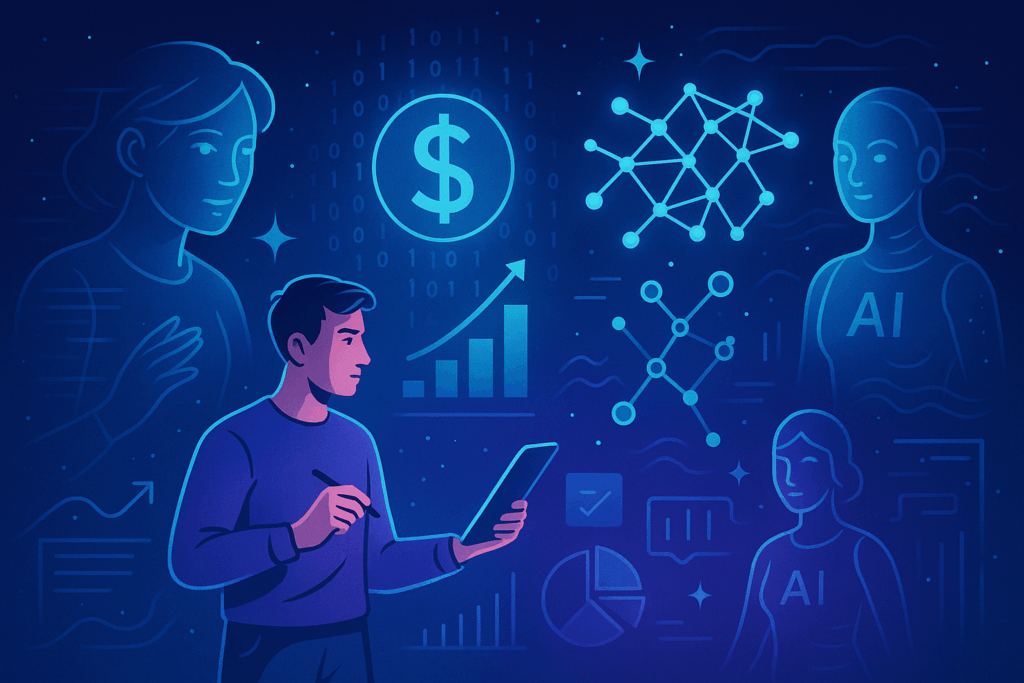
In 2025, the creative economy stands at a crossroads. Technology has demolished traditional barriers, empowering millions to publish, produce, and monetize content without institutional permission. Yet, in place of the old gatekeepers—publishers, labels, and galleries—algorithmic overlords have risen, wielding invisible but immense influence. The result is paradoxical: unprecedented freedom coupled with unpredictable precarity. This era of “permissionless creativity” has become about survival as much as self-expression.
This evolution was partly anticipated by entrepreneur Nicholas Kinports in his influential 2018 HackerNoon essay, “Permission to Create”, which predicted that creators would thrive by directly engaging their audiences without institutional approval. However, the landscape today is both richer and more complex than Kinports imagined.
Democratization and the Rise of the Everyday Creator
One of the most significant shifts in recent years is the democratization of content-production tools. Early on, Kinports foresaw technology making professional-grade creativity accessible to everyone. His prediction has become reality, reshaping media entirely. According to Adobe’s 2025 State of Creativity report, over 80% of creative professionals now leverage generative AI tools like Adobe Firefly and ChatGPT. Platforms like Canva and Runway further empower users to create sophisticated content effortlessly.
The effects have been dramatic: as Stripe’s 2024 Creator Economy Report revealed, more than 200 million people worldwide now identify as creators, with many transforming passions into viable careers via TikTok, Instagram Reels, and YouTube Shorts.
Algorithmic Gatekeepers: The New Power Brokers
Yet, the absence of institutional gatekeepers has not meant total freedom. Instead, algorithms now dictate success or failure. Kinports accurately predicted decentralization, but the unintended consequence was algorithmic dependency, where visibility is managed through opaque digital systems. Today, creators report immense pressure and anxiety tied to platform unpredictability, as highlighted by a 2024 Fast Company investigation.
A 2023 UCLA Center for the Digital Future report confirms this trend, noting nearly two-thirds of creators experience chronic stress linked to deciphering and pleasing platform algorithms. Thus, today’s gatekeepers—algorithmic, not human—are perhaps even less accountable than traditional executives.
Monetization Inequality and the Myth of Economic Liberation
Kinports envisioned a world where creators directly monetize their work through audience support, free from corporate influence. Platforms such as Patreon, Ko-fi, and Substack have indeed empowered creators. Yet, monetization remains highly polarized.
According to MBO Partners’ 2024 report, fewer than 10% of independent creators earn more than $100,000 annually. Similarly, analysis by Supercreator reveals that roughly one-third of OnlyFans’ total revenue goes to just the top 1% of creators, leaving the majority struggling financially.
AI as Collaborator and Competitor
One pivotal development unforeseen by Kinports in 2018 was the rise of generative AI. Tools like Midjourney, OpenAI’s GPT-4, and Adobe Firefly have dramatically altered creative workflows. However, AI not only assists but competes. Fully AI-generated influencers, such as Milla AI, an entirely synthetic personality with millions of followers, illustrate this new competitive dynamic.
Creators now grapple with AI-produced content that rivals human-generated work in cost, quality, and speed, sparking heated debates about authenticity, ownership, and creative value.
Decentralization: An Unfulfilled Promise
Kinports originally speculated that decentralization would redefine the creative economy. While Web3 platforms like Lens Protocol and Farcaster have appeared, they remain niche. Dominance still resides in centralized platforms owned by TikTok, Meta, and Alphabet. Despite decentralization’s theoretical appeal, real-world adoption remains limited.
Navigating the Future: From Permissionless to Sustainable
Nicholas Kinports was right: creators no longer need permission to pursue their crafts. Yet the removal of institutional oversight has resulted in new complexities—algorithmic opacity, economic inequality, and mental health pressures—amplified further by AI-driven creativity.
The next chapter must shift focus from mere accessibility toward sustainable creativity. Freedom alone isn’t enough. The future hinges upon building an equitable and supportive ecosystem where permissionless creation also means healthy, viable careers.
